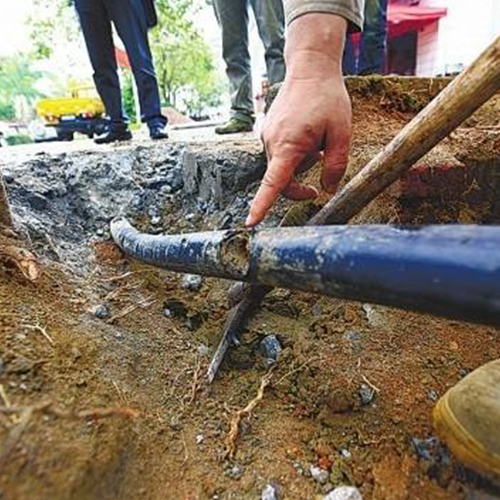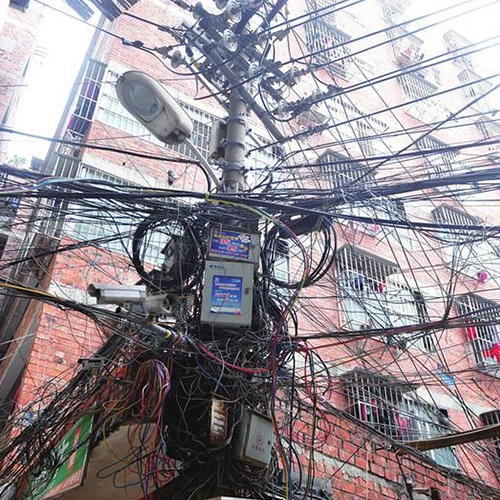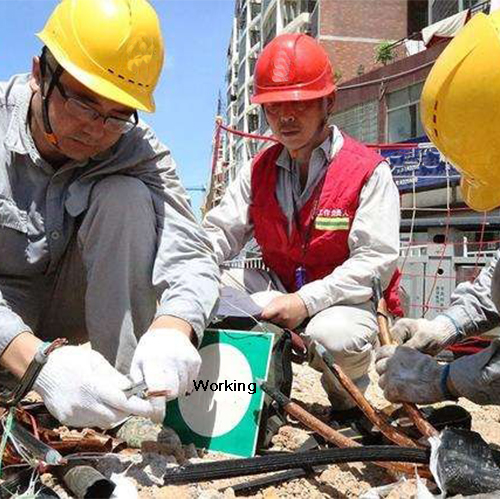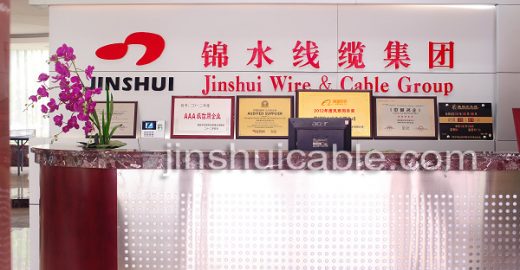Breakdown means that the original insulation performance of the cable's insulation layer is damaged due to external force damage, extrusion, etc., aging of the insulation material, etc., and the original insulation performance is lost. It occurs between the core wires of the cable during operation. The core wire discharges to the outer protective steel strip of the cable and to the ground, causing a ground short circuit fault.
The cable is damaged by heavy objects, the excavator accidentally injures the cable, the cable is bent too much during laying and the insulation is damaged, the cable is severely squeezed during shipment and the insulation and protective layer are damaged, the bottom layer sinks and the cable is directly buried. Excessive tensile force will cause damage to the insulation and even break the cable. Mechanical damage to house cables can be caused by overhead cables. If the cables are laid along the wall, they should be covered, the ground should be clearly marked, and soil extraction near the cable lines should be stopped in a timely manner.

External force damage includes external mechanical damage and pulling force from terrain changes. In addition, hidden dangers may arise during the manufacturing or laying process, which may also lead to cable breakdown.
Due to poor construction methods and poor quality of materials used, the cable head and core weak links malfunction, resulting in the breakdown of the cable insulation layer.
If the rated voltage of the cable does not match the grid voltage, or a high voltage suddenly rushes in during operation, the insulation strength of the cable may be damaged, causing the cable to be broken down.
If a grounding or short circuit accident occurs, the damage may not be serious at the time, but it may be broken down after a period of operation.

During long-term operation of the cable, due to poor heat dissipation or overload, the electrical and mechanical properties of the insulation material deteriorate, causing the insulation layer to become brittle or cracked. If this is the case, preventive withstand voltage tests on the cable incoming lines should be carried out periodically. If it is found that the cable insulation has declined and cannot meet the requirements for safe operation, the cable should be replaced with a new one.
Cable lines should be inspected regularly and cleaned promptly if risks are found; cable lines should not be overloaded for a long time and work rules and regulations must be followed.
Overhead cables, especially those laid along walls, should be concealed.

Corrosion of the cable lead sheath will cause the insulation to breakdown due to moisture, so the protection of the cable outer sheath should be strengthened, and a layer of asphalt should be painted on the cable outer sheath every 2 to 3 years.
The electric field near the cable terminal is very uneven, and the electric field intensity is the largest at the edge of the sheath, so the insulation thickness at the edge should be increased.
When moving the cable, the cable should be kneaded by the house. The bends in laying cables should not be too large to damage the internal insulation of the house.
The above are the common causes of cable breakdown, as well as the measures that should be taken for different reasons. In order to prevent cable breakdown, environmental factors, manufacturing quality, installation process and other factors need to be considered in specific situations. Zhengzhou Jinshui Industrial Co., Ltd. hereby reminds everyone to standardize cable operations and ensure personal safety.
Get A Free Quote

The first phase of the 137th Canton Fair will officially open on April 15, 2025! Zhengzhou Jinshui Industrial Co., Ltd. mainly produces and exports wire…

The Benin account manager came to our company to discuss the business of ABC cable! Yemen brotherhood customers come to the company to exchange product…

Zhengzhou Jinshui Industrial Co., Ltd. wishes you a Merry Christmas!!
Submit Request
PDF Request